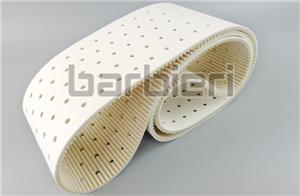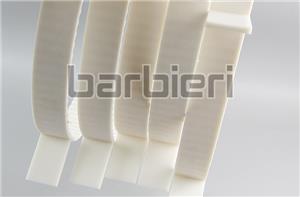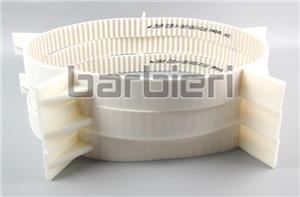Will the discoloration and yellowing of polyurethane timing belts affect their use?
Due to the nature of the material itself, polyurethane timing belts often cause surface discoloration and yellowing due to long storage time and improper storage. This is a natural aging phenomenon of the material. Aging is an inevitable phenomenon of polyurethane timing belts during storage and use. These are normal phenomena, not quality problems of the timing belts themselves. So when the polyurethane timing belts turn yellow, how to judge whether they can continue to be used, and how to take countermeasures to extend the service life of the timing belts?
1. Determine whether the yellowing of polyurethane timing belts/PU synchronous belts is normal for use Normal phenomenon: If only the surface is slightly yellowed, and the tensile strength, wear resistance, and transmission accuracy of the synchronous belt are not affected, there is no need to replace it immediately. Abnormal situation: If the discoloration is accompanied by a decrease in hardness, stickiness or cracks on the surface, it may be a signal of material hydrolysis or deterioration, and it needs to be replaced in time.
2. Reasons for discoloration of polyurethane timing belt/PU synchronous belt
Oxidation reaction: The timing belt is exposed to oxygen in the air for a long time, and an oxidation reaction occurs to generate yellow compounds, causing the surface to turn yellow.
Ultraviolet radiation: Exposure to ultraviolet light will accelerate material aging and cause color changes.
Storage environment: High temperature, high humidity or long-term storage may cause polyurethane synchronous belts to naturally turn yellow, but it does not directly affect performance.
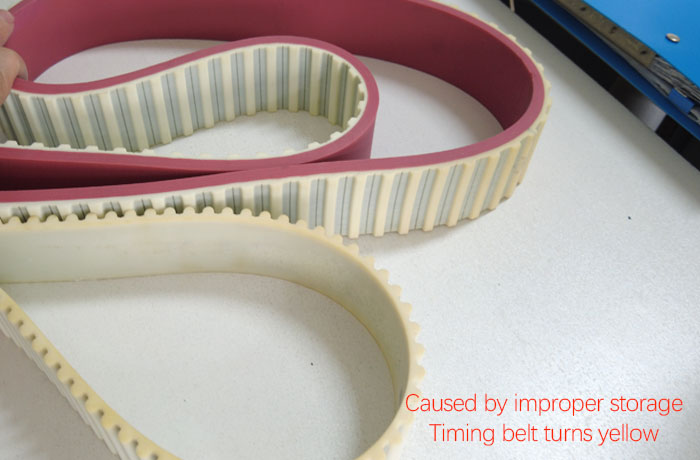
3. Does the discoloration of polyurethane timing belt/PU synchronous belt affect performance
Mechanical properties:
The discoloration of the timing belt is usually caused by surface oxidation or environmental factors, and does not affect its tensile strength, wear resistance and transmission accuracy.
If the discoloration is accompanied by a decrease in hardness, stickiness or cracks on the surface, be alert to the risk of material hydrolysis or deterioration (common in high temperature and high humidity environments).
Service life:
Simple color change will not directly shorten the life, but long-term ultraviolet exposure may accelerate aging. It is recommended to check the belt body status regularly.
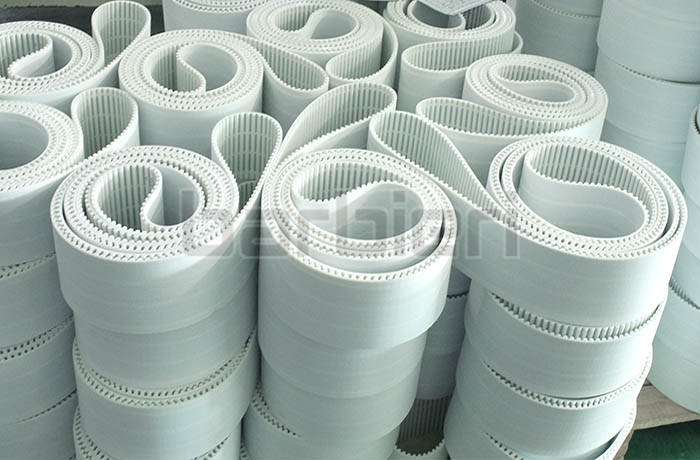
4. Countermeasures
Daily maintenance:
Avoid long-term exposure to ultraviolet rays or high temperature environments. Install a protective cover when necessary, and regularly clean the surface oil and dust to prevent chemical corrosion. Storage management:
Unused timing belts should be stored in a dry, light-proof environment to avoid yellowing due to long-term moisture.
- Polyurethane Timing Belt
- Annular Timing Belt
- Open-end Timing Belts
- AT-series Timing Belts
- T-series Timing Belts
- STD-series Timing Belts
- HTD-series Timing Belts
- RPP-series Timing Belts
- TT5-series Timing Belts
- Imperial Series Timing Belt
- Supported Polyurethane Flat Belt Series
- Double Sided Timing Belt
- ATN-series Timing Belts
- Timing Belt With Backing
- Timing Belt With Fabric
- Timing Belt Punching
- Polyurethane Self-tracking Timing Belt
- Polyurethane Belt With Profile
- Special Processing Timing Belt


